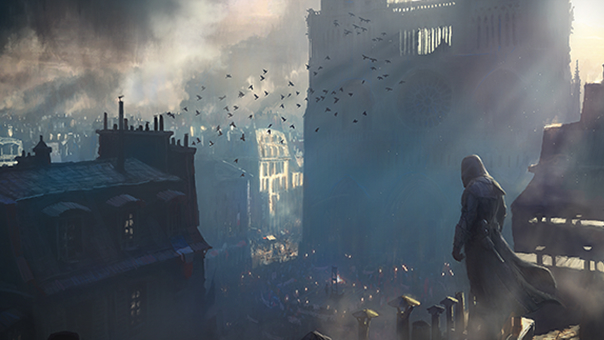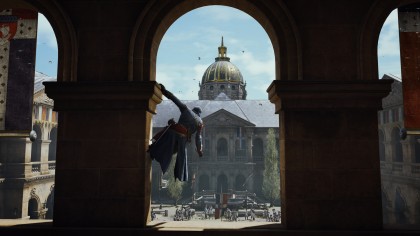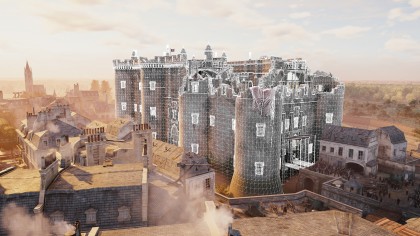Inside Assassin's Creed Unity, Ubisoft's 'leap of faith'
Arno takes the new-gen plunge

It was the goriest of times, it was the ugliest of times. Frankly, why it's taken Assassin's Creed until the seventh installment to explore the French Revolution is beyond us. But now, with two new consoles to play with, Ubisoft is taking us to one of the bloodiest stains in the fabric of history, opening out the playground of an 18th Century Paris that's filled with beheadings, betrayals and civil unrest. The city of love, this is not.
Assassin's Creed Unity is the first game in the series to be built from the ground up for Xbox One and PS4. Black Flag was later put on the new machines but it was still designed for the previous generation. So there's been some significant technological progress this time around, along with some overhauls to the combat, skills and customisation options. But Unity still has all the hallmarks of a classic Assassin's Creed game: parkour, assassinations, and sights of historical significance.
Only now it's bigger. A lot bigger, actually. "If you take all of the land mass of Black Flag and put it together its smaller than Paris," Alex Amancio, the game's Creative Director, tells us. "This is the biggest city we've ever made. And again, not only is it big in surface, its big in scale; there are sewers, there are catacombs, and the idea is that it's not only big in scale but its big in activities.

"Black Flag had a lot of activities but it was a little bit of a satellite thing, it was related to the ship, and it was sort of mini games. Our complexity comes from the core experience of the game. So this is by far the most complex game that we've ever done in the franchise."
Such great heights
Building Paris obviously wasn't easy, and required taking pictures for hi-res textures, studying historical pictures for reference, and of course, a bit of Google Maps work. Paris hasn't changed all too much since 1789, but there are monuments, such as the Bastille, you won't see today. "We took as many features of history needed to be respectful, but we change some of them so we can ship an actual cool game," says Nicolas Guérin, World Level Design Director on Unity.
"The revolutionary Paris is a bit smaller than the actual Paris. The centre of Paris is almost a 1:1 scale, and the further you go towards the periphery, the more you increase the scale. That's quite interesting for us because you always respect the position of buildings to one another, which is what makes the city look like the real city. It's not like a Picasso painting."

Guérin tells us that the game's entire map is five times as big as all of Assassin's Creed 4's land mass combined, while the main city of Paris is three times as big as Assassin's Creed 3's New York. "The French capital has been hugely documented so we had lots of maps to play with. We had a huge array of documents to select… usually we have three old maps that barely look like the city."
Sign up for breaking news, reviews, opinion, top tech deals, and more.

But it's not all about the exterior architecture; Arno will be able to enter around a quarter of the game's buildings when he's avoiding those pesky French guardsmen. "One in four buildings have seamless interior," says Guérin. "Before we needed to load. Not only does this add a layer of realism as it doesn't feel like a movie set, it feels like there's actually stuff going on, but it gives you a whole new dimension in terms of your experience. You can be running away from guards, step through a door, go upstairs, jump through a window up to the rooftop. That's stuff you could never do before with previous gen."

Hugh Langley is the ex-News Editor of TechRadar. He had written for many magazines and websites including Business Insider, The Telegraph, IGN, Gizmodo, Entrepreneur Magazine, WIRED (UK), TrustedReviews, Business Insider Australia, Business Insider India, Business Insider Singapore, Wareable, The Ambient and more.
Hugh is now a correspondent at Business Insider covering Google and Alphabet, and has the unfortunate distinction of accidentally linking the TechRadar homepage to a rival publication.